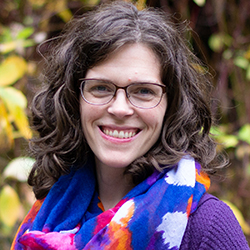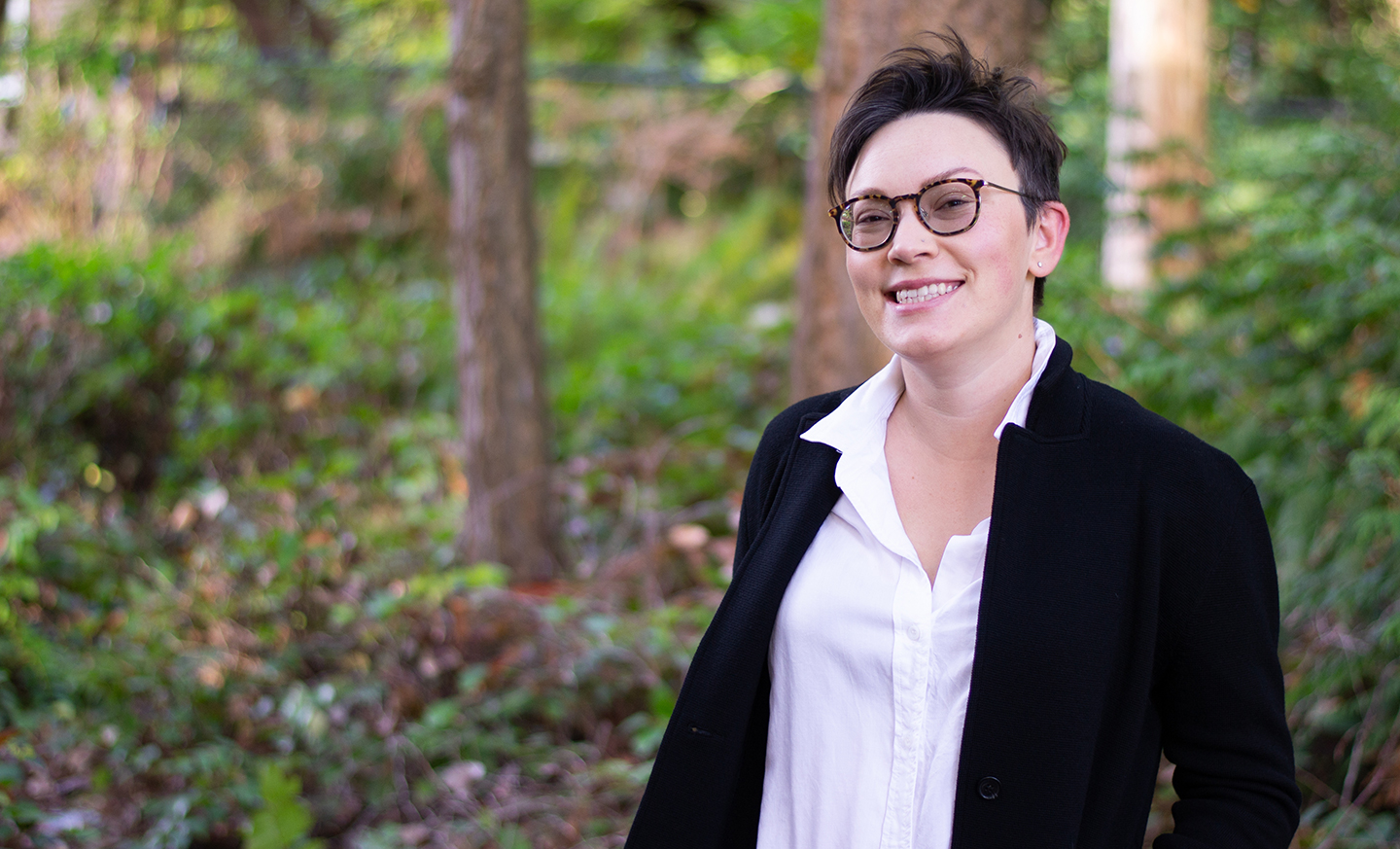Libraries are a vital part of communities — a place to learn and connect with other people. And while libraries have long been more than the physical resources within their walls, that fact has been clearer than ever since the COVID-19 pandemic forced libraries to close their buildings.
As the pandemic changes everything, iSchool students and researchers are working to understand how librarians are adapting and how their programming is changing to meet community needs.
Katya Yefimova (pictured above), an iSchool Ph.D. candidate, and Brandyn Boyd and Anna Gibson, Master of Library and Information Science students, are working on the research along with the Technology & Social Change Group (TASCHA).
Yefimova, Boyd and Gibson conducted interviews over the summer and fall, with more planned in spring. Yefimova says the nature of the study will help them see the bigger picture of how libraries adapted over time.
“I really appreciate being able to focus across Washington,” Yefimova said. “It’s helpful, because it really varies — some are small libraries, some are big, some are urban, some rural. The pandemic has created really different situations for all of them.”
The information from the study will help librarians learn from each other and highlight areas where funding or professional development might be needed. The researchers plan to share results as they go, and the findings will also inform national research.

“Libraries have many different ways of reaching and interacting with people,” said Stacey Wedlake, a research coordinator and analyst with TASCHA.
“I think libraries as buildings are wonderful and important places for communities. One day we will be able to go back and be in community in these spaces. But librarians have a lot to give the communities in places that are not the library. They can reach communities in new ways and it’s a good thing to learn from this time.”
Chris Coward, TASCHA director, said the work illustrates the impact of a $16 million grant TASCHA received from the Bill & Melinda Gates Foundation to continue the work of its Global Libraries Initiative.
“This grant enables us to be very nimble,” Coward said. “We didn’t know four years ago that COVID was going to hit. Post-COVID, there could be some big changes. Just like how every sector is thinking how it is going to operate in the future, libraries need to sort out how a post-COVID world will look and be proactive.”
At the same time researchers are having to be nimble, so are libraries. Lisa Rosenblum, director of the King County Library System, is making constant decisions about how her library system will operate, to meet state guidelines and keep her staff safe. First, storytimes and event were limited to small groups — then canceled. Eventually, following Gov. Jay Inslee’s statewide order, all buildings were closed. When that happened, Rosenblum said, King County Libraries used their money for collections exclusively to create more robust digital offerings. That was incredibly popular, as was curbside pickup once they were able to offer.
“We know libraries don’t serve everyone the same. The inequities in society at large also exist in libraries. This is a chance to rethink how we serve people.”
Librarians also moved their group events online. Some events actually have higher attendance now. Board meetings, which had been sporadically attended in person, had many people join digitally. She said that while things are constantly changing, she thinks they’re unlikely to ever fully go back to how they were.
Coward believes it’s important to capture how libraries are coping right now and share that information widely — and to begin considering how to create new programs or shift existing programs to fit needs.
Some of the discussions with librarians have shown that storytimes for kids are now reaching families who weren’t able to participate before.
“There was a concern that online storytime would be inaccessible for those who don’t have internet at home, and that has been part of the picture,” he said.
But, in some cases, families from under-resourced communities have been able to attend when they couldn’t before. “The barrier was not the internet,” Coward said. “The barrier was time.”
Yefimova is particularly interested in that aspect: How will COVID affect libraries’ methods for serving communities equitably?
“The pandemic has highlighted and magnified structural inequities that exist in our society,” she said. “So many people rely on the public library to meet so many of their needs — from using the technology to getting homework help or help with job applications, for socializing, for early learning activities, you name it. For many communities, the library plays a really crucial role.”
At the same time that closing library buildings cuts off crucial services, Yefimova found that it’s also opening up new ways to connect.
“I heard again and again that libraries were able to plan programs and bring in people who otherwise wouldn’t have participated,” she said.
She’s excited to be able to continue the conversation with librarians in the coming months.
“We know libraries don’t serve everyone the same,” she said. “The inequities in society at large also exist in libraries. This is a chance to rethink how we serve people. I’m very humbled and excited to see this research unfold. I think it’s a huge moment to create change.”
